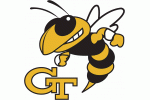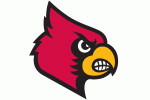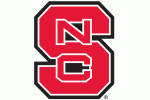It was a tale of two halves in Saturday’s victory over the ‘Noles.

The Syracuse Orange may not have shown the same scoring ability on Saturday as they did in the season’s first two contests, but the offense was still plenty effective against the Florida State Seminoles — even if that effectiveness was largely confined to one half.
Take a look below as we break down what succeeded (and failed) against FSU in the big win.
First Quarter
/cdn.vox-cdn.com/uploads/chorus_asset/file/13107353/Screen_Shot_2018_09_18_at_12.52.41_AM.png)
/cdn.vox-cdn.com/uploads/chorus_asset/file/13107355/Screen_Shot_2018_09_18_at_12.53.35_AM.png)
Play-call breakdown: 12 called runs, 14 called passes
Eric Dungey’s throwing looked off early (and the elbow tweak hammered that home). But the start of drive two was sharper and faster, though it also featured some lesser throws. Penalties killed momentum of these early drives, as did drops and Dungey’s lack of accuracy here and there. SU’s play-calling inside the 10 was atrocious in the first half, with drive two being the poster child for a far-too-conservative approach. Jamal Custis also dropped that perfect touchdown pass on drive four.
Second Quarter
/cdn.vox-cdn.com/uploads/chorus_asset/file/13107357/Screen_Shot_2018_09_18_at_12.54.27_AM.png)
/cdn.vox-cdn.com/uploads/chorus_asset/file/13107359/Screen_Shot_2018_09_18_at_12.54.58_AM.png)
Play-call breakdown: 13 called runs, 6 called passes
This is where the questions around Dungey’s health could probably start in earnest, with a couple poor throws and the missed fourth down conversion when he didn’t turn up the field soon enough. Still, penalties eliminated two really nice longer passes from Dungey. The overall play breakdown ends up maddening, however, especially in short-yardage. Babers and OC Mike Lynch redeem themselves in the second half. But the constant, repetitive run plays in short-yardage situations weren’t working here and seemed to indicate something was stopping the Orange from throwing.
Third Quarter
/cdn.vox-cdn.com/uploads/chorus_asset/file/13107361/Screen_Shot_2018_09_18_at_12.55.44_AM.png)
/cdn.vox-cdn.com/uploads/chorus_asset/file/13107363/Screen_Shot_2018_09_18_at_12.56.25_AM.png)
Play-call breakdown: 12 called runs, 14 called passes
We’ll look at Tommy DeVito’s game specifically at the end, but the 33-yard deep ball to Custis was fantastic. Also, drive nine is nearly perfect in terms of what this team wants to do: exact mix of run and pass, with one setting up the other. The only slight drawback is that the offense is running slightly slower with DeVito than Dungey. That’s fine for now, and the drive made it to the end zone anyway. Also, Jarveon Howard runs like a madman and we all need to see him carrying the ball more.
Fourth Quarter
/cdn.vox-cdn.com/uploads/chorus_asset/file/13107365/Screen_Shot_2018_09_18_at_12.57.06_AM.png)
Play-call breakdown: 13 called runs, 4 called passes
I’d disregard the breakdown of run vs. pass here because the game was largely in-hand and SU was attempting to burn off clock. That also didn’t stop Syracuse from putting 10 points up on the board, though. Nothing really to see here beyond quality field position and smart clock management.
***
- Overall play-calling breakdown: 50 called runs vs. 38 called passes (last week: 38:42)
- First half play-calling: 25 called runs vs. 20 called passes (25:18 in second half)
- First downs: 25 total (11 rushing, 10 passing, 4 penalty; Last week: 17:9:0)
- First down play selection: 27 called runs, 12 called passes (Last week: 23:16)
- First down plays for five or more yards: 14 (Last week: 18)
- Second down play selection: 12 called runs, 16 called passes (Last week: 13:15)
- Third down play selection: 10 called runs, 10 called passes (Last week: 10:7)
- Third down conversion: 8-for-20 (5 runs, 3 passes; 6-for-13 last week)
- Fourth down conversion: 0-for-1 (2-for-3 last week)
- This week, a ridiculous 65 of Syracuse’s 88 plays (73.9 percent) took place in FSU territory. They spent nearly the entire second half beyond the 50. On average, the Orange have the best starting field position of any team in the country (their own 43.9-yard line).
- SU was just 3-3 on play-action throws, for 39 yards and a score. Given how much SU ran the ball, it was well set up for them to use play-action more (and technically they did on a few plays called back).
- The Orange had six plays go for 15 or more yards — versus eight last week. Of this week’s big gains, three went for 25 or more yards (including Howard’s big 45-yard run). Another 10 plays went for between 10 and 14 yards, however (versus eight last week).
- Including penalties, 17 plays went for a loss or gained zero yards — a figure that’s climbed each week. On one hand, none occurred vs. FSU after the first drive of the second half. On the other, several occurred at the goal line.
- Syracuse was 6-for-8 from the red zone on Saturday, though that did include three field goals. Overall red zone scoring percentage is pretty low at 18-for-22, and touchdown percentage (59 percent) is bad once again. SU’s also had the most red zone opportunities, though, along with North Texas. They also have the second-most conversions in the country.
- SU had four three-and-outs in the game, including the first drive which sets an unfortunate tone.
DeVito’s numbers aren’t eye-popping, but the playbook was still opened up for him a bit and he took advantage, going 11-for-16 for 144 yards and a touchdown through the air. As mentioned, he’s running the offense a bit slower, but there were also more run plays to keep eating up clock. DeVito also made two absolutely money throws (both to Custis), which are a tantalizing look at the future of the passing game for the Orange when Tommy eventually takes over.
Given SU’s struggles inside the 20, and especially inside the 10, it would make sense to put a bigger back like Howard in for those opportunities. When faced with a short field, SU’s options get more limited since it can’t use tempo or a five-wide passing game necessarily to test a defense. To-date, the best option they have is trying QB sneaks close to the goal line. The second half saw play-action used to positive effect with Ravian Pierce, however. I just never want to see the first-half play-calling with three straight goal line dives again. I got flashbacks to GERG vs. Iowa and it was ugly.
Both for Dungey and DeVito, screens were working incredibly well, as receivers found ways to not just wrangle the passes but do something after the catch. Sean Riley, Nykeim Johnson, Devin Butler, Jarveon Howard and Ravian Pierce all turned effective screens into first downs. That’s impressive against a defense with some speed like FSU’s. Hopefully we see much more of as Babers finds more new ways to use weapons like Johnson and Howard.



















